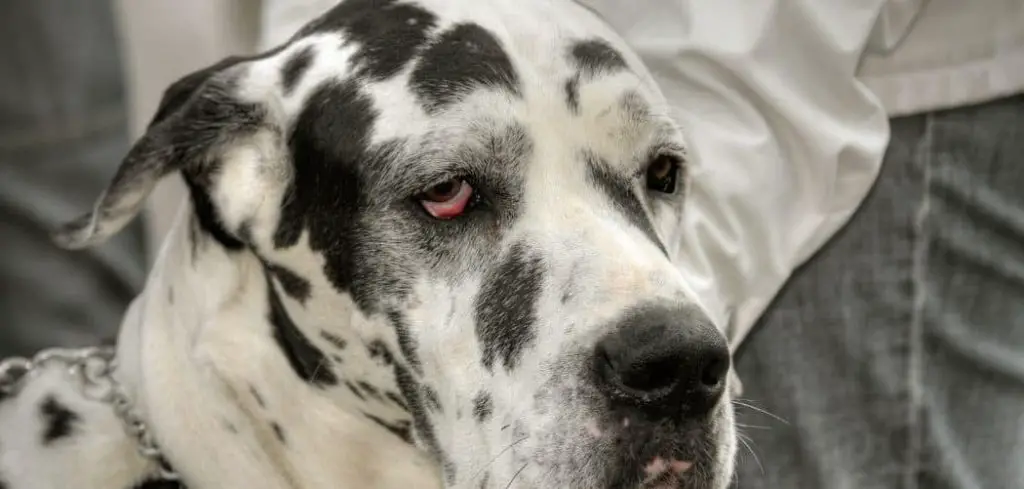Dogs use their paws for everything, so when they start licking them excessively and limping, it’s a clear sign something is wrong.
This combination of behaviors is concerning because it may point to pain or underlying health conditions that shouldn’t be ignored.
We outline the common reasons for excessive licking of paws and limping in dogs, what you can do at home, and when to seek veterinary help.
Table of Contents
Dog Licking Paws Excessively and Limping — Why It Happens
When a dog licks its paws excessively and begins limping, it usually indicates irritation, pain, or discomfort. Common reasons include paw injuries like cuts or foreign objects, allergies that cause itching, infections such as yeast or bacteria, joint issues like arthritis, or musculoskeletal injuries.
These issues can range from minor surface irritations to deeper medical problems, all of which require attention depending on severity.

Dog Licking Paws Excessively and Limping: Common Causes
Paw Injuries or Foreign Objects
A simple injury is one of the most frequent reasons dogs lick their paws and limp. Cuts, scrapes, or puncture wounds on the paw pads can be painful, and licking is the dog’s instinctive way to soothe it.
Small objects like thorns, grass seeds, or splinters can also lodge between the toes or in the paw pad, causing irritation. The constant licking may worsen the injury and lead to infection if not addressed.
Read more: Dog Licking Paws Excessively at Night (Why it happens more after dark)
Allergies and Skin Irritation
Allergies are another major culprit. Dogs may develop seasonal allergies, food allergies, or reactions to chemicals like lawn treatments.
Allergies often cause itching in the paws, leading to nonstop licking. Over time, this excessive licking creates soreness and can even cause secondary infections.
Limping may develop because the paws are painful or swollen from the irritation.
Infections (Yeast or Bacterial)
Dogs’ paws are prone to developing infections, especially in warm, moist areas between the toes.
Yeast infections can cause redness, itching, and a foul odor, while bacterial infections may lead to swelling, discharge, and significant pain.
These conditions often result in both excessive licking and limping because walking becomes uncomfortable.
Arthritis and Joint Problems
Older dogs or breeds predisposed to joint issues may lick their paws due to arthritis pain.
While the actual issue lies in the joints, dogs often lick at their paws or legs as a way of responding to discomfort.
Limping in this case is a direct result of joint stiffness or pain. Conditions like hip dysplasia or cruciate ligament injuries can also cause both licking and limping as dogs try to manage discomfort.
Parasites (Mites or Fleas)
External parasites can also trigger paw licking and limping. Mites, such as those causing mange, can create intense itching and irritation around the paws.
Fleas, while usually affecting larger body areas, may still cause paw-focused discomfort. The constant itching and chewing can make it painful to walk, resulting in limping.
Paw Pad Burns or Chemical Exposure
Dogs walking on hot pavement, icy roads, or treated lawns may suffer paw pad burns or chemical irritation.
This type of injury causes immediate pain and results in licking to soothe the discomfort.
Limping often follows because stepping on the injured paw pad is painful. Without proper care, these injuries can worsen quickly.
Read more: Dog Licking Paws Excessively After Grooming (Here’s why)
What to Do If Your Dog Is Licking Its Paws Excessively and Limping
If your dog is showing these symptoms, start by gently examining the paws. Look for cuts, swelling, splinters, or redness between the toes.
Cleaning the area with lukewarm water can help remove debris or irritants. If you suspect allergies, wiping the paws after walks may reduce exposure to allergens.
For minor irritation, a vet-approved paw balm can help soothe discomfort.
If limping persists, limit your dog’s activity to prevent further strain. Ensure your dog avoids hot pavement, icy surfaces, or rough terrain that could worsen the injury.
Never allow excessive licking to continue unchecked, as it can delay healing and cause secondary infections. Using a cone or protective bootie may be necessary while the underlying issue is treated.
When to Call or Visit Your Vet
Seek veterinary care promptly if your dog’s paw licking and limping do not improve within a day or two. Immediate attention is needed if you notice bleeding, swelling, pus, foul odor, or visible foreign objects.
A sudden onset of limping combined with persistent licking may point to something more serious, like a deep infection, ligament injury, or arthritis flare-up.
If your dog shows signs of systemic illness—such as lethargy, loss of appetite, or fever—this could indicate an infection spreading or a deeper health condition. In these cases, veterinary care is urgent.
Dogs that are unable to bear weight on a limb, cry out in pain, or continue to worsen should be seen immediately.
Read more: Dog Licking Paws Excessively (What it could mean)
Key Takeaway
Excessive paw licking combined with limping is not just a quirky behavior—it’s a warning sign that your dog is in discomfort.
From minor paw pad injuries to serious joint problems, the causes vary but should never be ignored.
Monitoring your dog closely, providing immediate care at home, and seeking veterinary guidance when needed ensures your dog remains comfortable and healthy. Taking action early can prevent small issues from becoming serious medical problems.
